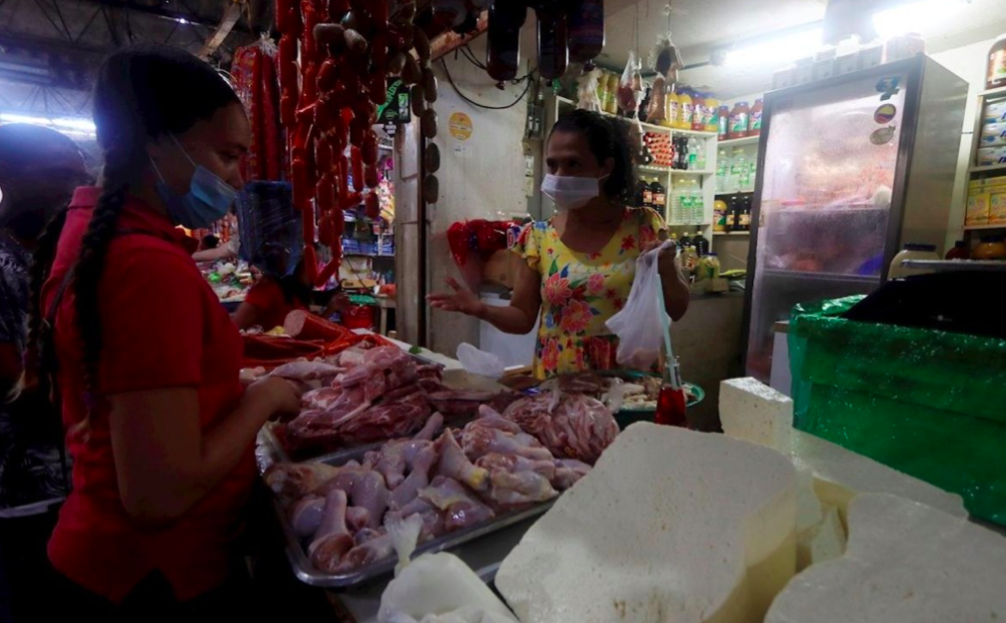RIO DE JANEIRO, BRAZIL – Colombians are preparing for the Christmas and New Year holidays with an economy in full recovery after the pandemic crisis, while the local market is facing sharp increases in the prices of essential products such as meat, chicken, milk, and eggs.
The global inflation phenomenon is also hitting Colombia. According to the National Statistics Department (DANE), in the last 12 months, it was 5.26%, well above the 3% target set by the Bank of the Republic (monetary authority).
Read also: Check out our coverage on Colombia
In meat, inflation was 30%, chicken 25%, eggs 13%, and milk 10%. The explanations for the increase in the prices of these products are related to phenomena such as the world container crisis, which affects Colombia due to difficulties in importing agricultural inputs; the protests in May and June, which damaged the economic dynamics, and the COVID-19 pandemic.

STRONG EXTERNAL DEMAND
For the director of the North Coast Cattlemen’s Association (Asoganorte), Julián Saade, in 2022, “the upward trend in meat and milk prices will continue”.
Saade said that, for example, the international demand for Colombian meat would not allow the price to go down in the local market.
“On the contrary, it is a reality that will be sustained in the coming years,” Saade told Efe to explain the relationship between supply and demand of the product.
The businessman added that something similar happens with milk because of its “connectivity” with meat production.
“When the price of meat rises, the farmer tends not to milk the cows and give the milk to the calf to improve the fattening process,” he said.
Saade also explained that “the international price of powdered milk”, one of the products imported by Colombia, is high and, with a sky-high dollar, around 4,000 pesos, “its importation is disadvantaged and therefore the price rises”.
He also explained that agricultural inputs, medicines, herbicides, and insecticides have also risen in price, influencing the final cost of the products that reach the table of Colombians.
AFFECTED PLAZA MERCHANTS
Throughout the country, the high prices of meat affect the consumer and the traders, for whom it is increasingly difficult to sell a product that can be considered “a luxury”.
In the popular Bazurto Market in Cartagena, Ramiro Cantillo has been working for more than three decades and assures that “the prognosis is that if this continues like this, we will run out of meat”.
“They will take it to the big stores where the middle and upper classes buy and in the informal markets, like this one, it will not be possible to distribute meat because here the one who comes to buy is the people,” he tells Efe.
Cantillo explains, for example, that a kilo of meat that costs 16,000 pesos (about US$4) eight months ago; today costs 22,000 pesos (about US$5.50).
For Iris Fabra, who sells cheese, chicken, eggs, and other foods in the Bazurto plaza, it is unfair that they, who throughout the year buy milk products from wholesalers, at this time, due to high prices and demand from abroad, “prefer to leave you without cheese”.
“Every week, they used to leave me 100 kilos of semi-hard cheese, and now they don’t leave even a small block”, she told Efe and explained that the same thing is happening with other products such as chicken.
“Any business goes bankrupt like this, with barely five hundred pesetas profit (about 12 cents on the dollar),” laments this vendor.
Even beer began to be scarce in the middle of this month in several regions of the country due to “a product supply crisis”, according to Bavaria, Colombia’s leading brewery.

